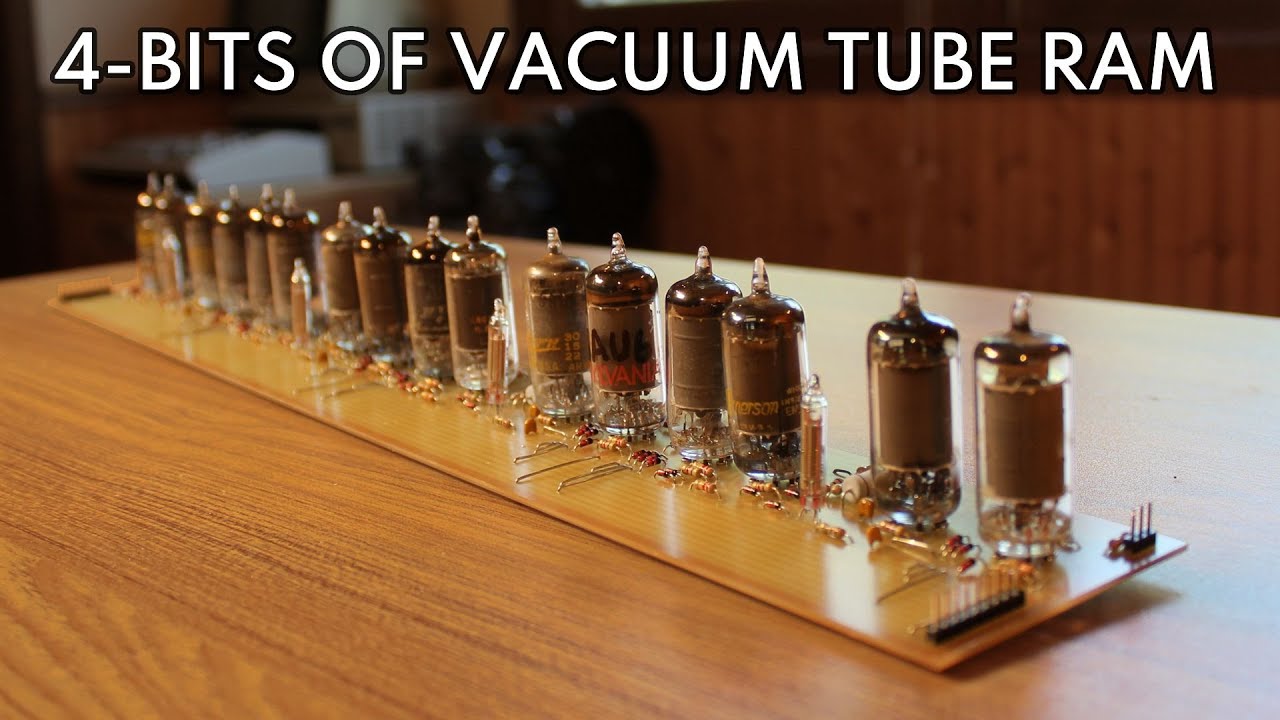After designing the read/write memory cell in part 24, it’s time to start fabricating the first element of the random access memory array: four bits of individually addressable vacuum tube memory. The addressing scheme will support up to four banks of memory with 64 bits each, allowing expansion to accommodate other memory devices in the future.
This provides an excellent illustration of why, as I wrote in 2004’s “Computation, Memory, Nature, and Life”, “Memory Is Tough”. Before the advent of semiconductor integrated circuit memory, the most complicated and expensive part of most computer systems was its primary memory, and programmers went to extremes almost unthinkable today to squeeze their programs into tiny memories. The entry-level IBM System/360 Model 30 mainframe, introduced in 1964, had a base memory configuration of 8192 bytes, and could run the standard Disk Operating System (DOS) on a system with 16384 bytes of core memory.
